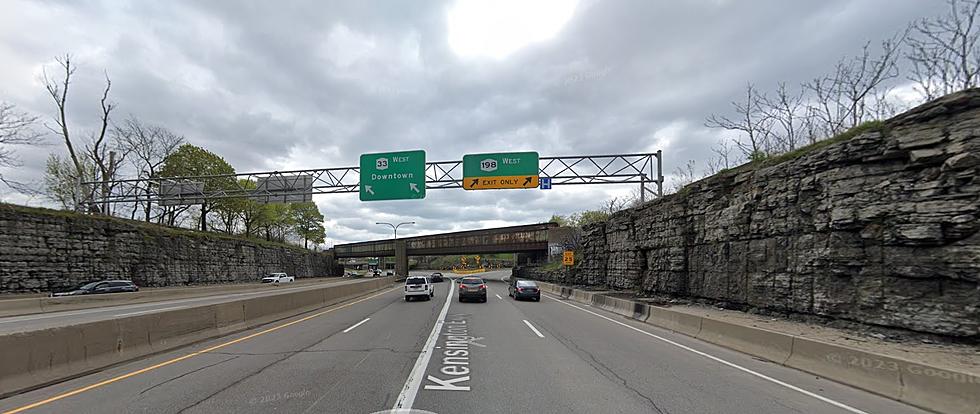Check Out Some Crazy Photos From the October Surprise Snowstorm
Today marks the 15th anniversary of the 2006 surprise snowstorm that impacted much of Western New York.

Lake Storm Aphid, as it was named by the National Weather Service in Buffalo, was an early-season lake effect snowstorm that dumped nearly 24 inches of snow in the area in 24 hours. The snow would only last for a couple of days as much of the snow melted by October 15th but the damage was already done by that time.
Because many trees still had leaves on them, the wet snow became too heavy for them causing many of them to fall down taking down powerlines with them as well.
The loss of power along with the down trees caused massive delays and closures in the area. Many schools were closed from October 12th until October 23rd. Schools in the Amherst district didn't reopen until October 26th. Schools in Hamburg didn't reopen until October 27th after repairs were done to buildings and power was restored.
The freak snowstorm also caused the closing of the Peach Bridge and the thruway because driving conditions were so bad.
The storm caused so much damage that both Erie County and Niagara County were declared major disaster areas by then-President George W Bush.
Check out this timeline of events of the storm according to Wikipedia.
- October 12 - Low-pressure system deepens to 980mb and becomes centered 140 km west of Attawapiskat
- 12:46 AM - Cold front passes Buffalo Airport reporting station
- 3:30 AM - Squall begins to form over Lake Erie
- 3:54 AM - Lake effect rain first reported at the Buffalo Airport
- 12:14 PM - Small hail and ice pellets reported at Buffalo Airport, temperature 41 °F (5 °C)
- 1:00 PM - Temperature falls to 37 °F (3 °C) at Buffalo Airport
- 1:38 PM - Temperature falls to 36 °F (2 °C) at Buffalo Airport
- 1:51 PM - Snow-rain mix reported at Buffalo Airport
- 2:36 PM - NWS Buffalo issues LES warning
- 2:54 PM - Radar detects first 20,000 ft (6 km) echo top, first lightning detected as well
- 4:54 PM - Snow begins to accumulate as snowfall rates reach 1.18 in (3 cm) per hour, heavy thunderstorms reported
- 7:30 PM - Buffalo Airport grounds all flights due to weather conditions
- 8:00 PM - NWS Buffalo begins to receive numerous reports of trees and power lines toppling after 3 in (7 cm) of snow accumulates
- 9:15 PM - Ontario Provincial Police close the Niagara section of the QEW
- 10:25 PM - New York State Thruway closes at Interstate 190, the Niagara Thruway
- 10:25 PM - Peace Bridge border crossing is closed
- October 13 - Low-pressure system sinks south and becomes stationary over Pagwa River
- Many schools and community centers are opened to the public as evacuation centers for people who have lost power and heat due to the storm
- 2:00 AM - Buffalo Airport reports 10.0 in (25.4 cm) of snow accumulation
- 8:00 AM - Buffalo Airport reports 22.0 in (55.9 cm) of snow accumulation
- 10:30 AM - Amherst, New York reports 24 in (60.96 cm) of snow accumulations, breaking an all-time record
Check out some photos that we found from those two days of craziness here in Western New York.
Pics from The 2006 Buffalo October Snowstorm
Bills Fans In The Snow
LOOK: The most expensive weather and climate disasters in recent decades
More From 93.7 WBLK









